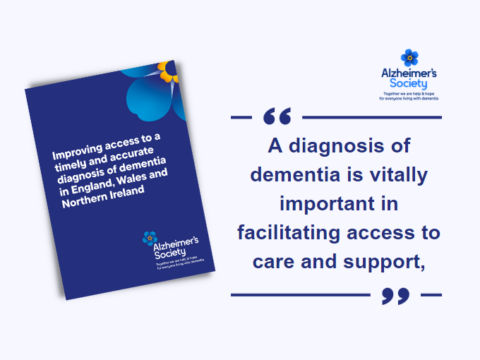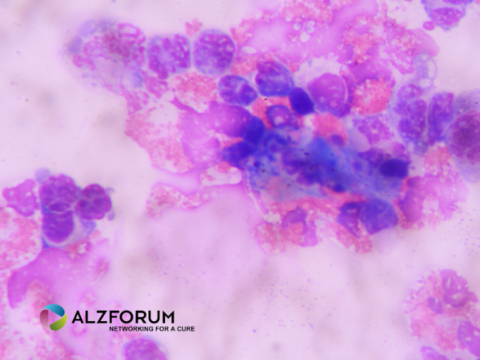
#image_title
The recent commercialisation of the first disease-modifying drugs for Alzheimer’s disease emphasises the need for consensus recommendations on the rational use of biomarkers to diagnose people with suspected neurocognitive disorders in memory clinics.
Most available recommendations and guidelines are either disease-centred or biomarker-centred. A European multidisciplinary taskforce consisting of 22 experts from 11 European scientific societies set out to define the first patient-centred diagnostic workflow that aims to prioritise testing for available biomarkers in individuals attending memory clinics. After an extensive literature review, we used a Delphi consensus procedure to identify 11 clinical syndromes, based on clinical history and examination, neuropsychology, blood tests, structural imaging, and, in some cases, EEG.
We recommend first-line and, if needed, second-line testing for biomarkers according to the patient’s clinical profile and the results of previous biomarker findings. This diagnostic workflow will promote consistency in the diagnosis of neurocognitive disorders across European countries.
Introduction
International societies and associations advocate for the early, timely, and accurate diagnosis of Alzheimer’s disease and related conditions,1, 2, 3 and indeed biomarkers are available that will help to achieve this goal.4 The advent of expensive disease modifiers for Alzheimer’s disease will require increasingly accurate diagnosis so that they can be targeted to those who will benefit the most.5, 6
A diagnosis of Alzheimer’s disease can be ascertained through either lumbar puncture and measurement of CSF biomarkers (ie, phosphorylated tau [p-tau] or total tau [t-tau], amyloid Aβ42, and Aβ42–to-Aβ40 ratio [Aβ42/40]), or amyloid-PET. However, these biomarkers are not always the most informative in individuals attending memory clinics. 2-[18F]fluoro-2-deoxy-D-glucose ([18F]FDG) PET gives information on patterns of cortical hypometabolism that are indicative of neurodegenerative diseases (eg, Alzheimer’s disease, frontotemporal dementia, Lewy body disease, motor tauopathies).
Brain SPECT with [123I] N-(3-fluoropropyl)-2β-carbomethoxy-3β-(4-iodophenyl)nortropane ([123I]FP-CIT) reveals impairment of the nigrostriatal pathway, and cardiac [123I]-meta-iodobenzylguanidine ([123I]MIBG) scintigraphy reveals impairment of the postganglionic sympathetic heart terminals, both of which characterise Lewy body disease. Additionally, EEG can show electrical abnormalities of the cortex in prion diseases, encephalopathies from several causes, Lewy body disease, and late-onset epilepsy. Polysomnography can detect the rapid eye movement (REM) sleep behaviour disorder that is common in Lewy body disease and other neurodegenerative conditions. Tau-PET with [18F]flortaucipir can consistently detect and quantify tauopathy of Alzheimer’s disease.4
Guidelines and recommendations have been developed to help clinicians use diagnostic biomarkers rationally and effectively.7, 8, 9, 10, 11, 12, 13, 14, 15, 16, 17, 18, 19, 20, 21, 22 However, these guidelines are only partly helpful in everyday clinical practice, as most of them are either biomarker-centred7, 8, 15, 16, 17 or disease-centred,9, 10, 11, 12, 13, 14, 22 and do not account for multiple diagnostic options and the availability of multiple biomarkers for sequential or parallel use.18 Those guidelines that do account for these factors either reflect only national expertise,19 or have been developed by non-representative groups of experts.15 As a result, the choice of biomarker is often influenced more by organisational and logistical factors than by clinical and patient-related factors.19, 20
With an aim to overcome these described limitations, delegates from 11 European scientific societies and organisations, and a patient advocacy association (Alzheimer Europe), have united efforts to define a patient-centred biomarker-based diagnostic workflow to be used in memory clinics. Delegates used their own expertise and a review of recent literature to reach consensus on numerous specific questions defined by an independent steering committee. A Delphi voting procedure was followed, from November 2020 to June 2022, to reach consensus.
The methodology and theoretical foundations of this exercise have been detailed in a previous paper.24 In the present Personal View, we report the diagnostic workflow. We also describe the six Delphi rounds that generated the workflow in the appendix (pp 2–11). Biomarkers of interest included traditional CSF biomarkers (Aβ42, Aβ42/40, p-tau, and t-tau), [18F]FDG PET, amyloid-PET, [123I]FP-CIT SPECT, cardiac [123I]MIBG scintigraphy, tau-PET with flortaucipir (the only commercially available tau tracer), polysomnography, and resting-state EEG according to the principal diagnostic criteria for neurocognitive diseases and guidelines.24

 Print This Post
Print This Post




